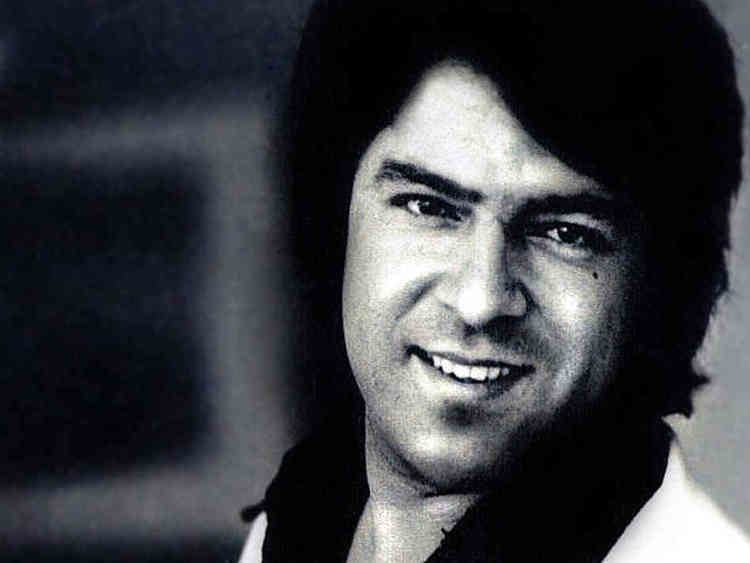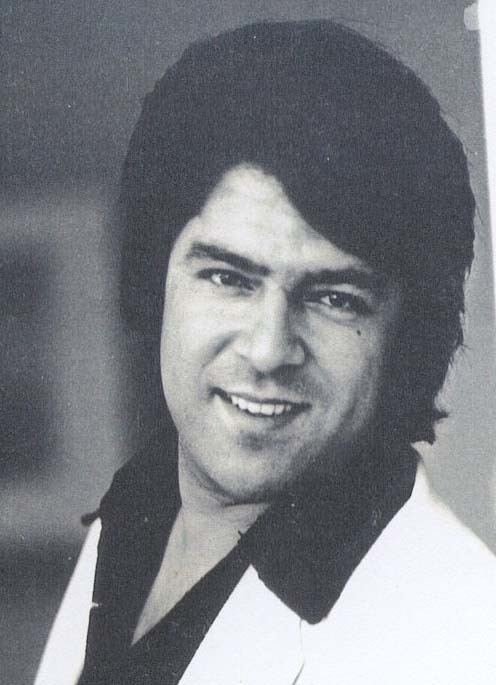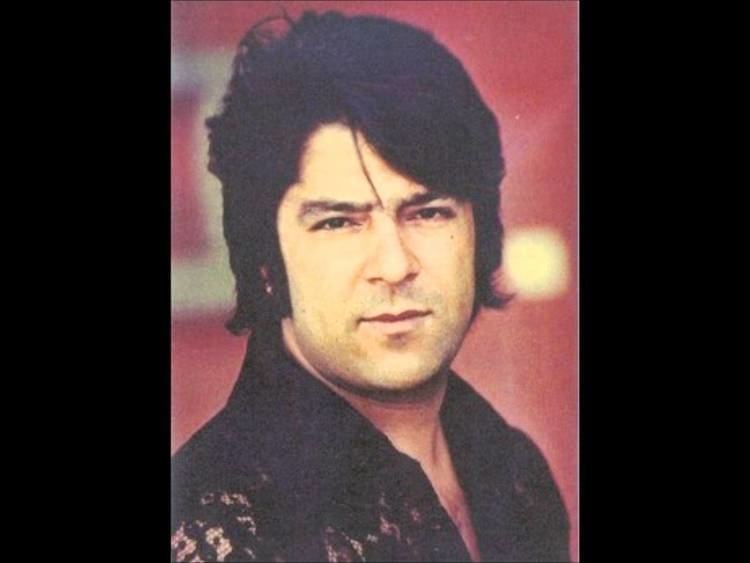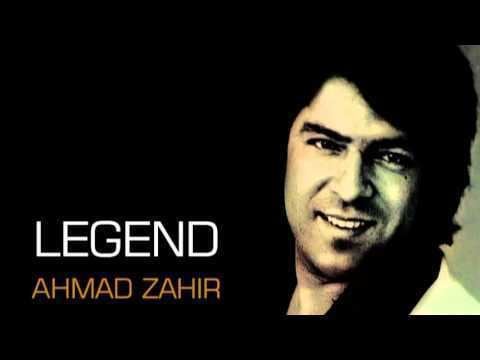Birth name Ahmad Toryalai Zahir Role Singer Genres Rock, pop Children Rishad Zahir | Years active 1967–1979 Name Ahmad Zahir | |
 | ||
Also known as Afghanistan Elvis Presley Died June 14, 1979, Salang, Afghanistan Albums Ariana Music, Vol. 1 – Dilak am, Music Center Parents Quraisha Zahir, Abdul Zahir | ||
Siblings Zahira Zahir, Asif Zahir | ||
Best of Ahmad Zahir - 10 songs - part 2 بهترین های احمد ظاهر
Ahmad Zahir (14 June 1946 – 14 June 1979) was a singer, songwriter, and composer from Afghanistan. His songs are mostly in the Dari language and are based on Persian poems, although a few are in Pashto. Zahir was the first popular pop singer in Afghanistan as his appeal crossed all boundaries of age, class, language, and regions. Besides being a pioneer of rock and pop music in Afghanistan, in a similar style to Elvis Presley, he experimented and performed almost all styles of music (indian classical, iranian, qarsak, qataghani and logari). His immortal fame is mainly due to his repertoire of songs that are uniquely Afghan. His songs "Zeba Negaram", "Merawi Az Mano", "Agar Bahar Beyayad", "Laili Laili Jan", "Khuda Buwad Yaret", "Kajaki Abroyet" and many others, are known by most in Afghanistan. They are ranked as some of the best music created in Afghanistan's musical history.
Contents
- Best of Ahmad Zahir 10 songs part 2
- Early years
- Music career
- Death
- Musical Style and Contributions
- Afghan music albums
- Ariana music albums
- Music center albums
- Private albums
- Other discography information
- References

After the great Afghan singer Sarban, Ahmad Zahir played the most vital role in the development of the Afghan musical style. Among Afghans, he is considered an icon of Afghan music and is widley regarded as the "King of Afghan music" and "The Afghan Star Elvis". Today, he is regarded as one of the greatest artists in Afghan music.

Early years

Zahir was born on 14 June 1946 (Jauza 24, 1325 of the Jalali calendar) in Kabul, Afghanistan. His father, Abdul Zahir, was a royal court doctor who served as minister of health and Prime Minister of Afghanistan between 1971 and 1972. He was a speaker of the parliament and an influential figure in King Zahir Shah's era who helped write the 1964 Constitution of Afghanistan.
Music career

Zahir attended Habibia High School in Kabul in the early 1960s. He sang and played the accordion in a band mainly consisting of his friends and classmates including Omar Sultan on guitar, Khalil Ragheb drum, Farid Zaland on congas and Akbar Nayab on piano. The band later became known as the amateur band of Habibia High School and performed in local concerts during celebratory occasions like Nowruz, Eid ul-Fitr, and Afghan Independence Day.

He later attended and graduated from Daru' l-Malimeen ("Teachers' College") in Kabul, then continued his higher education for two more years in India to get a degree as an English instructor. Eventually, however, he decided that music was his true calling. Zahir began his solo career composing songs based on well-recognized Persian poems. His first recorded song, "Gar Kuni Yak Nizara", was his own composition, sung in the pilu raga. He continued writing and recording songs such as "Azeezam Ba Yaadat", "Ahista-ahista", "Akhir Ay Darya", "Hama Yaranam", "Agar Sabza Boodam", "Guftam Ke Mekhwaham Tura", "Shabe Ze Shabha" and "Parween-e Man".
Zahir worked with mentors such as Ismail Azami (saxophonist), Nangalai (trumpeter), Abdullah Etemadi (drummer), and other musicians including Salim Sarmast, Naynawaz, Taranasaz and Mas'hour Jamal. He recorded over 22 albums in the 1970s. His songs were noted for their mellifluous tone, poetic style, compelling depth, and passionate emotional evocation. His lyrics covered a wide range of subjects. Many of his songs contained autobiographical elements or political criticism of Afghanistan's government. As a result many of his recordings were destroyed by the government.
Zahir was on the scene of Afghan music for only 10 years at the most; however, Zahir managed to record more than 30 albums. This was and is unique in any music industry around the world. All of these albums were successful and widely accepted (to this date) by everyone. The musicians managed to complete these recordings almost 40 years ago with almost no technology of today's world, and all was done in live recordings. It is said the kings recorded his Arian Music Album 1 in one day, that had more than 12 songs. Zahir only recorded two music videos during his career.
A controversy regarding the relation between his song "Tanha Shodam Tanha" and Claude Morgan's song "El Bimbo" (1974) exists. Some sources date the song and the album "Lylee" on which it appeared to 1971, which would make Morgan's version a cover, and some (mostly based on a previous version of this article) date it to 1977, reversing the relationship.
Death
Zahir died on 14 June 1979, on his 33rd birthday. It was reported in the news that he died in a car accident around the Salang Tunnel. There are mixed views from critics regarding his death, some claim that he was assassinated. Zahir's political stance was at odds with the Marxist government of the time. A large crowd of mourners attended Zahir's funeral in Kabul, clogging the city streets and bringing daily activities to a halt.
After his death, Zahir was considered a national hero. Because of his privileged family background, Zahir helped to establish music as a more respected profession which in turn led to the founding of The Kabul Music School in 1974.
Musical Style and Contributions
Of all the Afghan musicians, the person most closely associated with creating the distinct Afghan sound of music is Ahmad Zahir. Although the distinct Afghan sound (as opposed to the Indian classical, folkloric Afghan music, and western music) was created by the Persian singer Sarban in partnership with the legendary composer Salim Sarmast, Zahir was the one who popularized the sound and took it to the masses. Sarban's songs such as Ahesta Bero, Khorsheede Man, Ay Sarban, Mushjke Taza Mebartad, Dar Daaman-e-Sahra, are considered the pearls of Afghan Persian music. However, the sombre poetry, complex music & numerous other subtleties of these songs could be appreciated only by a minority of highly educated and erudite Afghans. The songs were not popular items of entertainment for the consumption of the common man. Ahmad Zahir simplified the lyrical, compositional, and orchestral aspects of Sarban and Sarmast's musical tradition. This does not mean he made the style simplistic, it only means he made it accessible and thus hugely popular to the masses, especially the youth of Afghanistan. For instance Zahir's song "Khoda Buwat Yaret" is a great example of an unmistakably Afghan musical sound. The lyrics of the song are understandable by almost all Persian speakers regardless of their education and knowledge of Persian poetic tradition, yet the poeticism, imagery, and emotional impact is as powerful as the best of Sarban's songs. As a result of this accessibility of Ahmad Zahir's songs, the vast majority of future Afghan singers who sang in the unique Afghan style were influence primarily by Ahmad Zahir and not Sarban (whose songs few had heard). Thus, Zahir can truly be credited as the singer responsible for the realization of a unique and distinct Afghan musical language--separate from the Indian, Iranian, western, and folkloric musical traditions.
Zahir's debut Album was recorded with Radio Kabul. It is the first Afghan album that falls in the western genre of music, comprising mostly of pop songs. However, although the rhythms, melody lines, and texture of songs were identifiably Afghan pop, there was a prominent Afghan (or rather eastern) element to them to--rather than use drums, Zahir opted for the tabla to hold the rhythm of the songs. Zahir's favourite instrument, the accordion (a western albeit not pop instrument) heavily features in this album. The most popular song of this album was "Az Ghamat Ay Nazanin."
However, it was Zahir's second album (also recorded with Radio Kabul) that not only shot him to superstardom, but was also hailed by critics as an artistic masterpiece. The album has a distinctly Afghan sound, very much a continuation of the distinct Afghan style of music created by the singer Sarban and Salim Sarmast. However, unlike the music of the Sarban & Sarmast duo (which were highly erudite lyrically & complex musically), Zahir's album retains the main elements of the Afghan sound but with a very popular and easily accessible lyrical and musical language. Songs like Hama Yaranam, Rozo Shabam (which is a collaboration with the great Afghan singer Nashenas), Tanha tuyere, and Tora Afsoone Chashmanam were hugely popular due to their easily accessible lyrics (mainly to the youth) and a sound that suited the Afghan musical palate perfectly.
Other Zahir albums and songs mostly continue the musical style of this album with songs like Agar Bahar Beyayad, Laili Lail Jan, Khuda buwat Yaret. Also, Zahir, covered numerous Sarban's songs like Ahesta Bero, Dar damage Sahra, Man Nainawaz Am, and Harja Ke Safar Kardam, Bahar Amad Beya Ay NawBahare Man etc. in his own original and popular style.
Zahir's considerable artistic talent and abilities meant that he experimented with almost all forms of music. And the genius of Zahir lies in the fact that he succeeded in creating hugely popular and critically acclaimed songs in almost all genres known to Afghanistan. For instance, one of the most popular songs of Zahir is Zim Zim Zim (Kajaki Abroyet) which follow the Qarsak folk music tradition of Panjshir. Other famous songs "Asha Ke man ba Mausume Gal" and "Chasm Ba Rahat Dil"(which is actually a compositional imitation of the Indian singer Mukesh's song Chal Akela) is composed in a distinctly Indian style of music.
Zahir was one of the first Afghan musicians not to shy away from covering great songs of other artists. He considered covering songs of other artists as paying homage to their artistic brilliance. He covered many songs of Indian films (which were popular in Afghanistan), many Afghan songs (mostly songs of Sarban eg. Dar Damane Sahra, Ay Sarban, Harja Ke Safar kardam, Man Nainawazam), Iranian songs (Hargiz Hargiz), and even Spanish folk songs such as "La Padova" (Dilbara Gar Tu Yare Man"), and Elvis Presley's "It's now or Never." This versatility and willingness to adopt musical creations of others for his own performance, greatly enhanced the merit of his own musical creations.
Afghan music albums
Note: Audio cassette versions of many of Zahir's Afghan Music albums are missing some songs that are present on the original vinyl records.
Ariana music albums
Note: The original Ariana Music record albums contain many hidden tracks.
